Prepping in the North vs the South
A natural disaster can happen anywhere and at any time. As you may already know, prepping for these emergencies will look slightly different for everyone, especially depending on where you live. For example, it wouldn’t make much sense for you to make preparations and gather supplies to stay warm during a winter storm when you live in places like Florida or the deserts of Arizona. There’s also little need to prepare for a hurricane when you live somewhere in the midwest. I want to chat about prepping in the North vs the South.
That’s not to say that a freakish winter or tropical storm couldn’t shut down major highways and businesses in these areas, but it’s rather unlikely. So you will need to prepare and have the correct supplies on hand for the right scenarios that may come about in your region. Here’s more on prepping for disasters, whether you live in the north or the south.
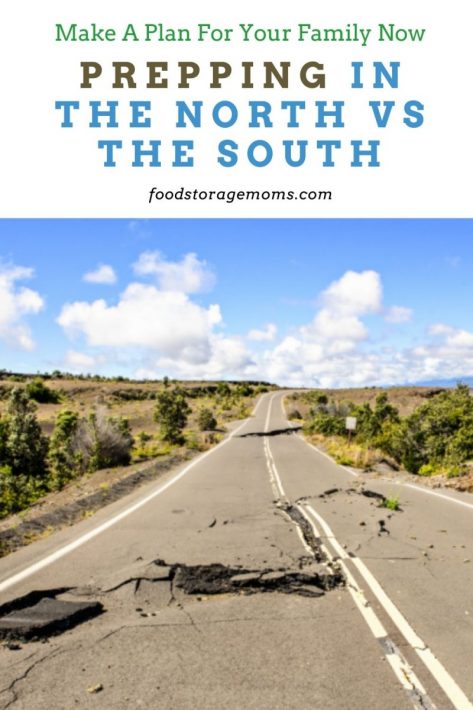
Prepping in the North vs the South
There are certain natural disasters that can take place all over the country, and then there are those that happen more heavily in the north, while some more often in the south. But like I just said, that doesn’t mean that the south will never experience something like an ice storm. Take the state of Texas for example, with what they experienced just a few months ago. Here’s a closer look at some of the emergencies that are more likely in both the north and in the south.
Emergencies that are More Likely in the North
- Winter Storms
- Tornadoes
- Wildfires (North and South Dakota)
- Earthquakes
Emergencies that are More Likely in the South
- Hurricanes
- Flooding
- Extreme Heat
- Landslides (Virginia, West Virginia, Kentucky)
- Tornadoes
- Earthquakes
- Wildfires
Prepping Similarities
Regardless of where you live and the emergencies that are more likely to happen in your area, there are some basic supplies that you will need to have. The first two are food and water. A minimum 3 day supply of both food and water for each member of your family is a great place to start, but a 2 week supply would be something you should strive for. Keep in mind that the average person uses about 4-gallons of water per day for drinking and sanitary purposes so you will need to plan accordingly. Here are a few other supplies that you will need:
- First aid kit
- Medicine
- Baby food and supplies
- Pet food and supplies
- Extra cash
- Can opener
- Flashlights with extra batteries
- Hand Sanitizer
- Wet wipes
- Cell phone chargers
- Weather Radio
- Multipurpose tool
- Camping stove or secondary cooking option (in case the power goes out)
- These are other supplies that you should also consider
Prepping Differences
You may have noticed that many of the disasters that were mentioned above are likely to happen in both the north and the south, but there are a few differences. Once you are aware of what they are, it will be easier for you to have an idea about what emergency supplies you need to be stocking up on for your area.
Prepping in the North
Tornadoes and earthquakes are some of the most common disasters that take place in both the north and the southern states, yet the north tends to experience much harsher and colder conditions during the winter then what the south does. So because of this, let’s take a look at what supplies and practices you will need in order to stay warm during a winter storm that could cause your power to go out.
- Warm clothing (layering)
- Sleeping bags
- Extra blankets/mylar blankets
- Generator
- Kerosine or propane space heater
- Plenty of fuel
- Rooms on the upper floor and in your basement will be the warmest rooms of the house
- Shut off any bedrooms that aren’t being used
- Seal off any windows with plastic wrap
Prepping in the South
The south brings a number of other disasters to the table that are not quite as common in the north. One of them being extremely hot temperatures at certain times of the year that can turn deadly. Hurricanes and flooding are also much more prevalent in the south, but that doesn’t mean that a tropical storm doesn’t make its way up along the coast from time to time. These are some of the supplies and practices that you will need in order to survive the heat and strong storms of the south.
The Heat (Before and during a heatwave)
- Invest in several battery-powered fans
- Purchase heat blocking curtains for your windows
- Create a solar-powered air conditioner
- Close off warm bedrooms that aren’t being used
- Open windows at night and shut them first thing in the morning
- Cook your meals outdoors (patio grill or camping stove)
Hurricanes
Hurricanes can certainly be unforgiving and deadly, even more so if you’re not prepared for one. Even before the storm arrives you need to have an evacuation plan already in place. Are there any family or friends that are able to take you and your family in who live just out of reach of the hurricane? Besides taking the main highway to make your escape, you will also need to come up with a secondary route to reach your destination in case your first option is blocked.
You also need to prepare your home in a number of different ways. These are things that you should consider doing to prepare your home before a hurricane comes around.
- Cut down any loose or low-hanging branches in your yard
- Go with tempered glass for your windows and glass sliding doors
- Install storm shutters that can protect your windows
- Anchor down your trailer or boat
- Take inventory of your possessions
- Make sure your insurance has enough coverage
- Secure and protect important documents and valuables
- Building materials for preparing your home, repairing your home after the storm
Final Word
While it’s important to be ready for every type of disaster that is under the sun, these are some of the most important prepping supplies that you will need based on where you are living in the United States. How is prepping in the North VS the South different for you? May God Bless this world, Linda.
Copyright Images: Earthquake AdobeStock_256717340 by Pololia

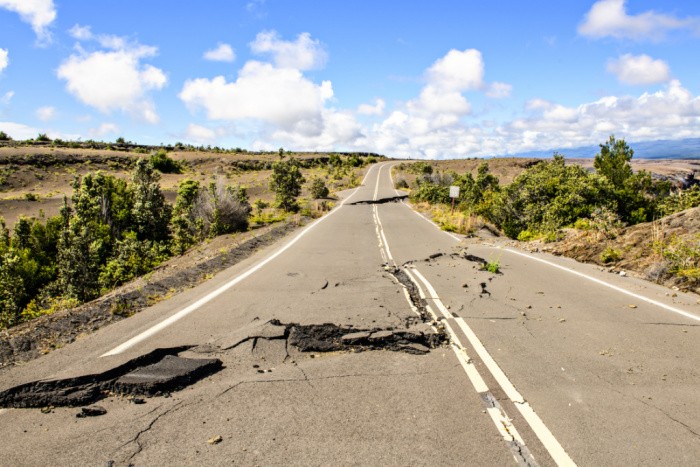


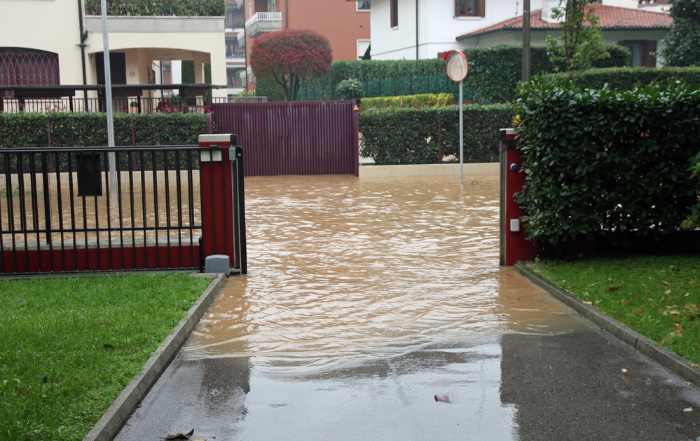
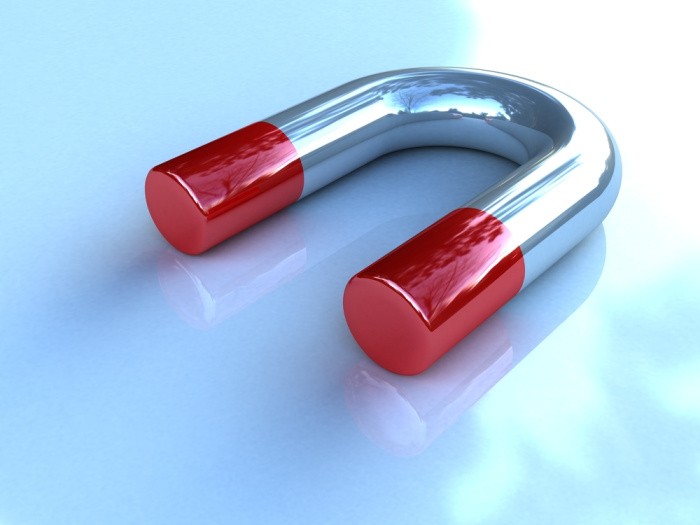
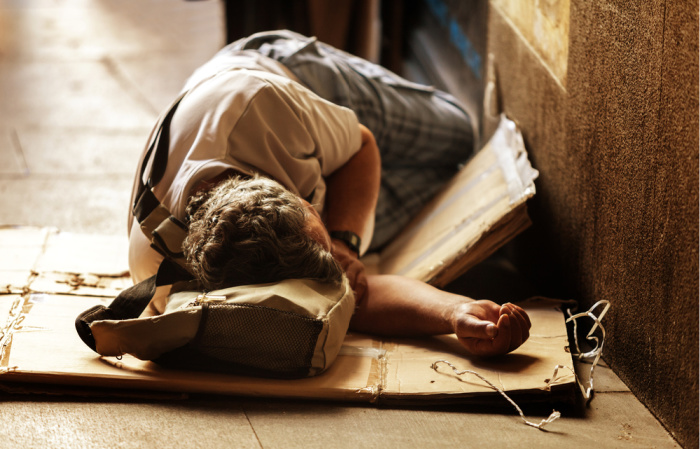

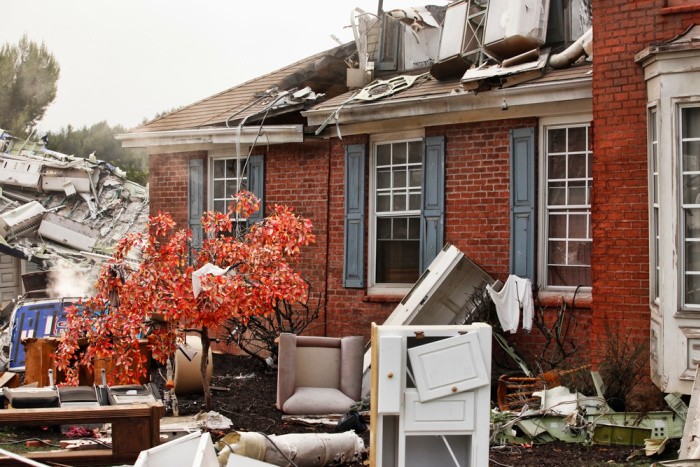







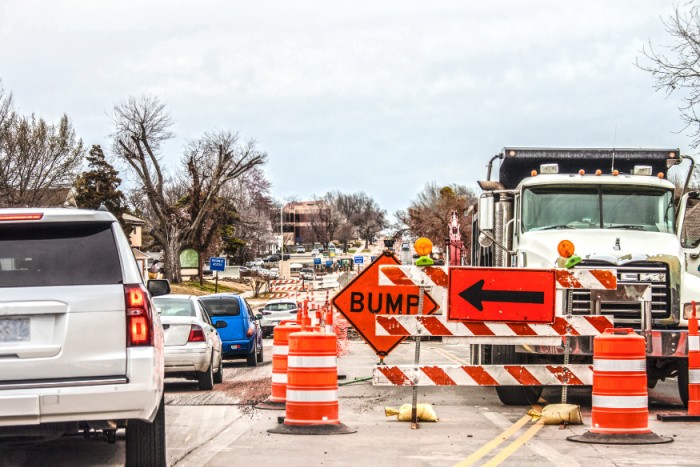
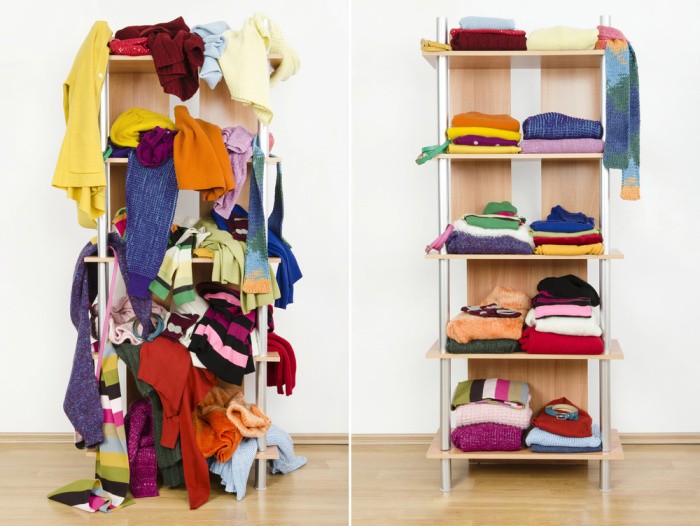
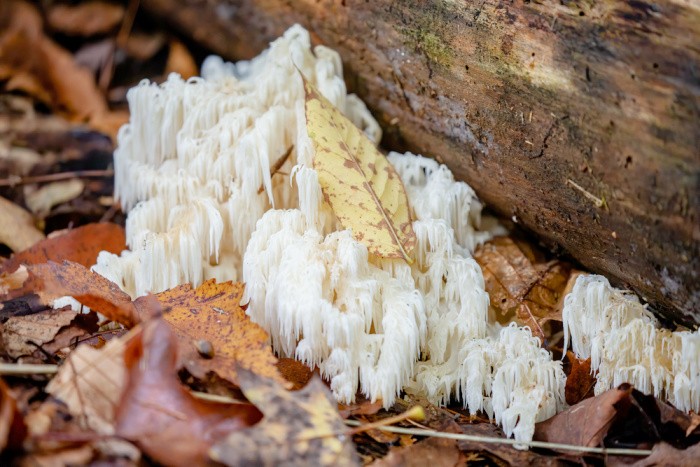
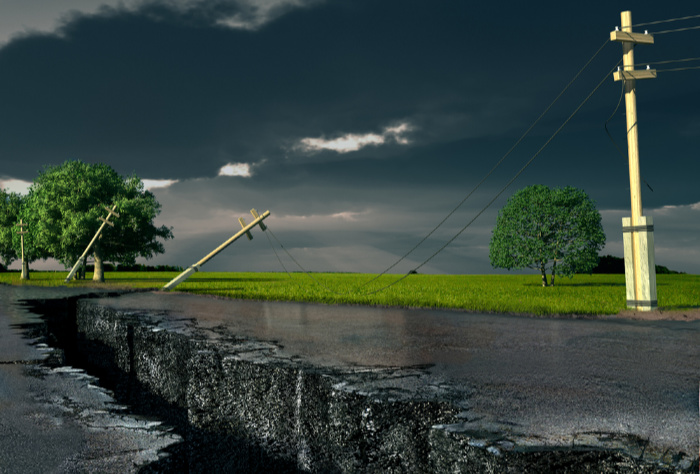



As stated covering the basics or pillars is the most important regardless of geographical location.
Having all guns and no water will lead to demise.
Body armor is popular but shelter is more important. A tent is like 3A body armor from the elements and a camper equates level 4. Neither will raise an eyebrow from that tatted beard oiled crowd at the range but if that’s your goal your not doing preparedness correctly.
Get your general preparedness house in order first before branching out to specifics.
You hang shower curtains and connect plumbing before building a deck. It’s the same here as you store food/water before buying radiation pills and night vision.
Hi Matt, you are so right, there are so many ways we have to be prepared at home. We must cover the basics or we will come up short. Love your comment! Linda
Some good points Linda. Generators are huge here in SW Fl and all over the south! As well as heat, humidity is very high here in summer. So, we keep our preps in sealed bags and in plastic totes. Canned goods last about as long here if you keep your AC going. I use an above ground wood burning BBQ (home made of course) for a lot of outdoor cooking. Fish mmmmm. No shortage of wood in FL. People usually throw it away. On a side note, flood Ins is huge down here too!
Thanks God Bless and stay safe…
Hi Bill, I grew up in California and I remember my parents barbecuing fish! OH MY GOSH! Yummy! I bet Florida has the best fish! I remember going to beautiful Florida and it was hot and humid. I live in the desert so it was a shocker! LOL! People throw-away wood?? Wow, they are obviously not preppers! Great comment, Linda
We’ve tried to prepare for anything and everything that comes our way. To me, that’s the way I grew up and how we live. We have 2 generators. Sleeping bags. Extra quilts, blankets. Pillows and the list goes on and on.
Hope for the best, prepare for the Worst!
Hi Deborah, I know we have to hope for the best and prepare for the worst. I heard today on TV there may be a shortage of Ketchup. Just giving you the heads up. I need ketchup!! Linda P.S. my book comes today.
Hi Linda! Yes, it’s a staple in our house too. Now I’m going to see if I can find a recipe to make some. I’ll share if I find one.
HM Ketchup
By Pioneer Woman
Ingredients
2 tbsp. Olive Oil
4 cloves Garlic, Minced
1 Medium Onion, Diced
1 can (28 Oz. Size) Peeled Whole Tomatoes
3 tbsp. Tomato Paste
1/3 c. Brown Sugar
1 tbsp. Molasses
1/3 c. Apple Cider Vinegar
1 tbsp. Worcestershire Sauce
1/2 tsp. Chili Powder
1/4 tsp. Powdered Ginger
1/4 tsp. Ground Allspice
1/4 tsp. Cinnamon
Directions
Heat a 4-quart sauce pot over medium high heat. Add olive oil and onions, sauté until translucent, about 8 minutes. Add garlic and sauté until fragrant, about 2 minutes.
Add tomatoes, tomato paste, sugar, molasses and cider vinegar. Bring to a slow boil, lower to a simmer and using a spoon crush the whole tomatoes. Add remaining ingredients and continue to simmer, uncovered for 45–55 minutes, stirring occasionally, until very thick. Make sure to keep an eye on it and stir it to keep it from scorching.
Use an immersion blender to puree the ketchup. If you don’t have an immersion blender, transfer it carefully to a blender or food processor and process until smooth. (Optional: Strain through a fine mesh strainer.) Chill in refrigerator for at least 2 hours. The ketchup will continue to develop flavor and thicken.
Enjoy on everything!
Notes:
1. Keep refrigerated in an airtight container up to a month.
2. Sweeteners and spices and be adjusted to taste.
3. Possible flavor additions: balsamic vinegar reduction, Sriracha, roasted garlic or roasted red pepper.
Hi Deborah, oh my gosh, I love it! That would make a lot of ketchup! This is awesome! I wish I had had this recipe when I had kids at home! It’s surprising how much ketchup we eat! It is a staple for sure! Thank you, Linda
Hi Linda! We did find some Sugar Free Ketchup at Walmart. I’ll be cutting the recipe down and making it either using Splenda or Honey. We need Sugar free things. And low sodium. =( Cuts down on a lot of what we can eat, but we do OK.
Hi Deborah, I’m glad you found what you needed. I picked up six regular ketchup bottles, that will last us a year! Linda
Thank you, Linda. I recently moved back to the north after 40 years in the south. I had forgotten a lot of things about the lifestyle up here and now know why I missed it so and longed to come home. Thank you for this wonderful information.
Hi Ceri, oh how nice you moved back to the north after 40 years. Life is good sometimes with change. I’m glad to hear you’re back home! Linda
Growing up on the northern East Coast I can tell you that we experienced hurricanes, flooding, as well as the other disasters you mentioned.
The South can have winter storms with ice and snow, look at Texas. I live in NC, but I prepare like I did when I lived in the North.
Hi Rose, nowadays, it seems like all the states have crazy weather pop up, right? We have to prepare for every type of emergency, weather, or whatever. Stay safe, Linda
Thinking about all of the things that can happen, I turn back a century or 2 – how did the pioneers stay cool during the hot, humid summers? They still had all of the chores to do even if it was 90 degrees and 90% humidity! While we do have the luxury of being able to stay warm or cool with electronic tools such as a generator or solar power (if you get enough sun which I cannot count on in western Washington), I think of the ways the old folks did it! I have a few hand fans and I have bandanas that I can soak in water to keep cool. That being said, I don’t have AC and still manage to stay cool enough when it does get hot where I live.
Hi Leanne, I agree, we will use portable fans or wet bandanas, or blankets and quilts whatever the weather may be. We will make it work. Can you imagine clearing the ground by hand, to plant vegetables in a long dress? I can’t imagine, I’m sweating just thinking about it. We really are lucky these days. Linda
Another Ketchup Recipe
HM Ketchup
Original recipe yields 24 servings
Ingredient
1 (28 ounce) cans peeled ground tomatoes
4 cup water, divided
1/3 cup white sugar
3/8 cup distilled white vinegar
1/2 teaspoon onion powder
1/4 teaspoon garlic powder
1 3/8 teaspoons salt
Scant pinch teaspoon celery salt
Scant pinch teaspoon mustard powder
1/8 teaspoon ground pepper
1/4 teaspoon clove
Directions
Step 1
Pour ground tomatoes into slow cooker. Swirl 1/4 cup water in each emptied can and pour into slow cooker. Add sugar, vinegar, onion powder, garlic powder, salt, celery salt, mustard powder, black pepper, cayenne pepper, and whole clove; whisk to combine.
Step 2
Cook on high, uncovered, until mixture is reduced by half and very thick, 10 to 12 hours. Stir every hour or so.
Step 3
Smooth the texture of the ketchup using an immersion blender, about 20 seconds.
Step 4
Ladle the ketchup into a fine strainer and press mixture with the back of a ladle to strain out any skins and seeds.
Step 5:
Transfer the strained ketchup to a bowl. Cool completely before tasting to adjust salt, black pepper, or cayenne pepper.
Hi Linda, I have to address the use of artificial sweeteners. Being a nurse, I continually do research on my own even though it isn’t a requirement as I’m a on call nurse owning my business. One of the things that really bothers me is the fact that there is never any negative info given about food products. And because the release of new food product usually does ‘blitz advertise’ at their release.
The use of sweetened products that contain ASPARTAME are deadly to our brains. When Splenda is consumed, it turns to chlorine in the body. Most soft drinks are sweetened by Aspartame.. It is also used in so very many products. Let me tell you what happens to the cells in your Brain when consuming anything containing Aspartame. Very gradually, the brain cells begin to swell. This swelling continues to happen each time you consume Aspartame. SO, Picture a balloon being filled with water. If you continue to add water, it will eventually burst. This same thing happens with the consumption of Aspartame and eventually the affected brain Cell explodes and is now dead. This is probably, partially responsible for dementia. So..use this iformation, or not. But I had to share this info with you and your readers.
SuzyQ
Hi Suzanne, wow, I believe this because I never use artificial sweeteners except for Stevia. Even this I use rarely. My favorite drink is water. Just plain water. Scary information about dementia, but it makes sense. Great comment, it’s so helpful, thank you, Linda
Hi Linda, Just wanted you to know that I am going to try both of the Ketchup recipes. Will let you know how they turn out after making them. Both sound yummy.
Stay safe.
Hi Suzanne, yay! Please tell me how they work out! I put salsa on everything almost as much as ketchup! Linda
Love this! We are notherners and just moved to the south. I love this because how we prepped up there will be different than how we prepped up there. <3
Hi Jess, oh you are so right! Down south may have more humidity so watch your flour for sure, and cereal, and baking goods! Oh and dishwasher detergent. It may become a block if you don’t store your stuff in a glass container with airtight lids. Linda